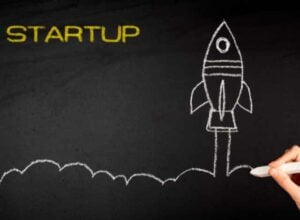In today’s competitive business landscape, employee engagement has emerged as a critical factor influencing organizational success. Engaged employees are not only more productive but also contribute to a positive workplace culture, which can lead to higher retention rates and improved customer satisfaction. This proposal outlines a comprehensive initiative aimed at enhancing employee engagement within our organization.
By implementing targeted strategies, we aim to foster a more motivated workforce that aligns with our company’s goals and values. The importance of employee engagement cannot be overstated. Research consistently shows that organizations with high levels of employee engagement outperform their competitors in terms of profitability, productivity, and customer satisfaction.
This proposal seeks to address the current engagement levels within our workforce and presents actionable strategies to elevate these levels. By investing in our employees’ well-being and professional development, we can create a thriving workplace that not only attracts top talent but also retains it.
Overview of Current Employee Engagement Levels
Identifying the Challenges
Recent surveys and feedback mechanisms have indicated that while some employees feel connected to their work and the company’s mission, there is a significant portion who report feeling disengaged or indifferent. Factors contributing to this disengagement include limited opportunities for professional growth, lack of recognition for achievements, and insufficient communication from leadership.
The Impact of Hybrid Work
Moreover, the hybrid work model adopted during the pandemic has further complicated engagement levels. While some employees thrive in remote settings, others feel isolated and disconnected from their teams. This disparity highlights the need for a tailored approach to engagement that considers the diverse needs of our workforce.
Developing Strategies for Improvement
By analyzing these insights, we can identify specific areas for improvement and develop strategies that resonate with all employees, regardless of their work environment.
Proposed Employee Engagement Strategies
To address the identified gaps in employee engagement, we propose a multi-faceted approach that includes several key strategies. First and foremost, we recommend implementing a robust recognition program that celebrates employee achievements at all levels. This could take the form of monthly awards, shout-outs during team meetings, or even a dedicated platform where peers can recognize each other’s contributions.
By fostering a culture of appreciation, we can boost morale and encourage employees to take pride in their work. In addition to recognition, we propose enhancing professional development opportunities through mentorship programs and training workshops. By pairing less experienced employees with seasoned mentors, we can facilitate knowledge transfer and create a supportive environment for growth.
Furthermore, offering workshops on relevant skills not only empowers employees but also demonstrates the company’s commitment to their career advancement. These initiatives will not only improve engagement but also equip our workforce with the tools they need to excel in their roles.
Budget and Resources Required
Implementing these employee engagement strategies will require a thoughtful allocation of resources and budget considerations. The recognition program can be initiated with minimal costs by leveraging existing platforms for communication and celebration. However, to ensure its effectiveness, we may need to allocate funds for awards or incentives that truly resonate with employees.
A budget of approximately $5,000 annually could be earmarked for this purpose, allowing us to create meaningful recognition experiences without straining our financial resources. On the other hand, the mentorship program and training workshops will necessitate a more substantial investment. We estimate that hiring external trainers or facilitators could cost around $10,000 annually, depending on the frequency and scope of the workshops.
Additionally, we may need to allocate resources for developing training materials and promoting these initiatives internally. Overall, a total budget of approximately $20,000 would provide us with the necessary resources to implement these strategies effectively while ensuring a positive return on investment.
Timeline for Implementation
A well-structured timeline is crucial for the successful implementation of our employee engagement initiative. We propose a phased approach that allows us to roll out each strategy systematically while monitoring progress along the way. The first phase will focus on launching the recognition program within the next three months.
This will involve gathering input from employees on what types of recognition they value most and establishing a framework for celebrating achievements. Following the successful launch of the recognition program, we will move into the second phase, which will focus on developing the mentorship program and scheduling training workshops. We anticipate that this phase will take approximately six months to implement fully.
During this time, we will recruit mentors from within the organization, develop training materials, and promote these opportunities to employees. By the end of the first year, we aim to have both initiatives fully operational and integrated into our company culture.
Measurement and Evaluation Plan
Regular Employee Surveys
We propose conducting regular employee surveys to gauge engagement levels before and after implementing our strategies. These surveys will include questions related to job satisfaction, recognition, professional development opportunities, and overall workplace culture.
Tracking Key Performance Indicators
By comparing results over time, we can assess whether our initiatives are making a tangible impact on employee engagement. In addition to surveys, we will track key performance indicators (KPIs) such as employee turnover rates, productivity metrics, and participation rates in training programs and recognition events. This data will provide valuable insights into how engaged employees are and whether they feel supported in their roles.
Informing Strategic Adjustments
By analyzing this information regularly, we can make informed adjustments to our strategies as needed, ensuring that we remain responsive to our employees’ evolving needs.
Anticipated Benefits and ROI
The anticipated benefits of enhancing employee engagement are manifold and extend beyond mere productivity gains. Engaged employees are more likely to exhibit higher levels of creativity and innovation, leading to improved problem-solving capabilities within teams. Furthermore, organizations with high engagement levels often experience lower turnover rates, which translates into significant cost savings associated with recruitment and training new hires.
From a financial perspective, investing in employee engagement initiatives can yield substantial returns on investment (ROI). Studies have shown that companies with engaged workforces can see up to 21% higher profitability compared to their disengaged counterparts. By fostering an environment where employees feel valued and supported, we can expect not only improved morale but also enhanced performance that directly contributes to our bottom line.
Conclusion and Next Steps
In conclusion, enhancing employee engagement is not merely an HR initiative; it is a strategic imperative that can drive organizational success in today’s dynamic business environment. By implementing targeted strategies such as recognition programs and professional development opportunities, we can create a workplace culture that fosters motivation and commitment among our employees. As we move forward with this proposal, the next steps involve securing approval from leadership for the proposed budget and resources required for implementation.
Once approved, we will initiate the first phase by launching the recognition program within three months while simultaneously preparing for the mentorship program and training workshops in subsequent phases. By committing to this initiative, we are investing in our most valuable asset—our employees—and positioning ourselves for long-term success in an ever-evolving marketplace.























